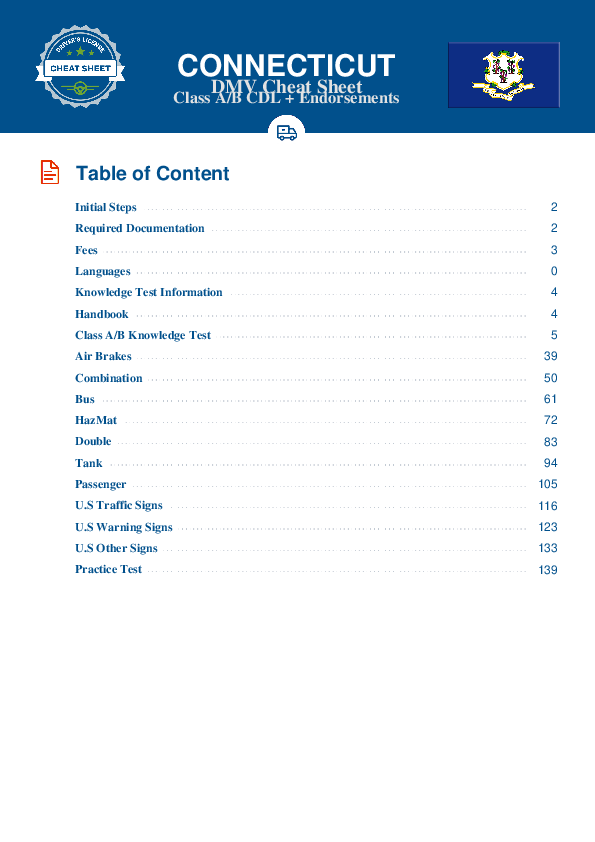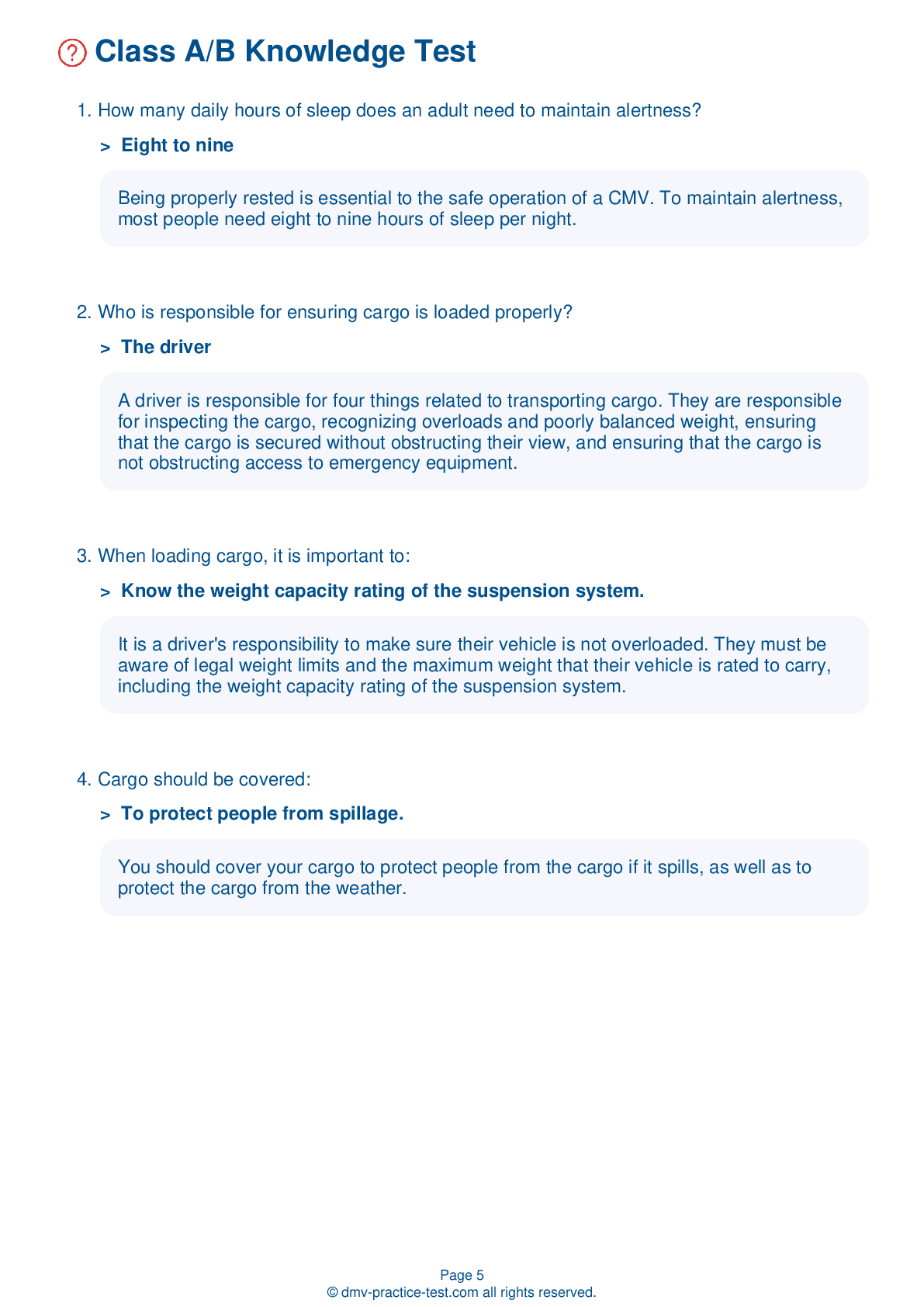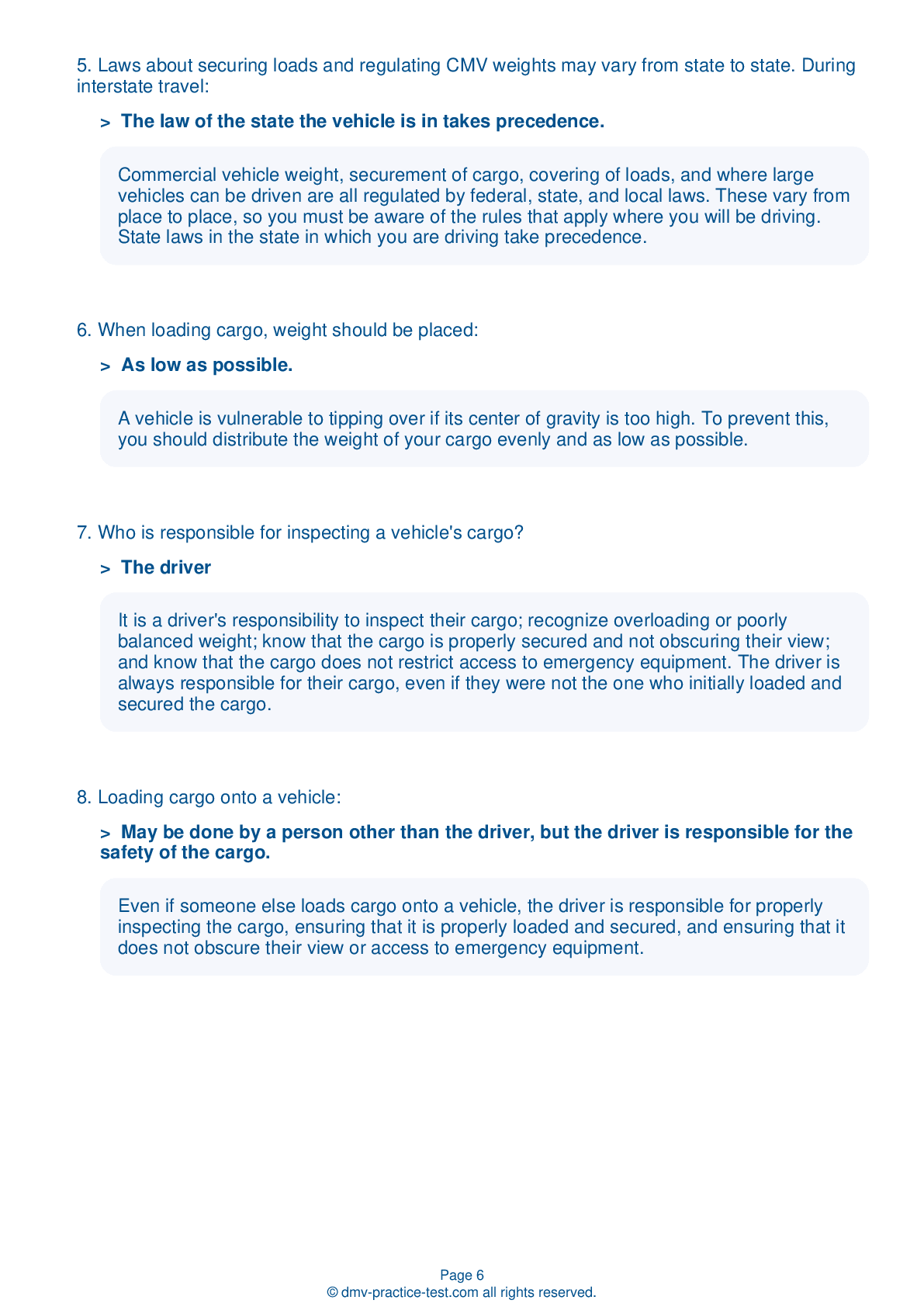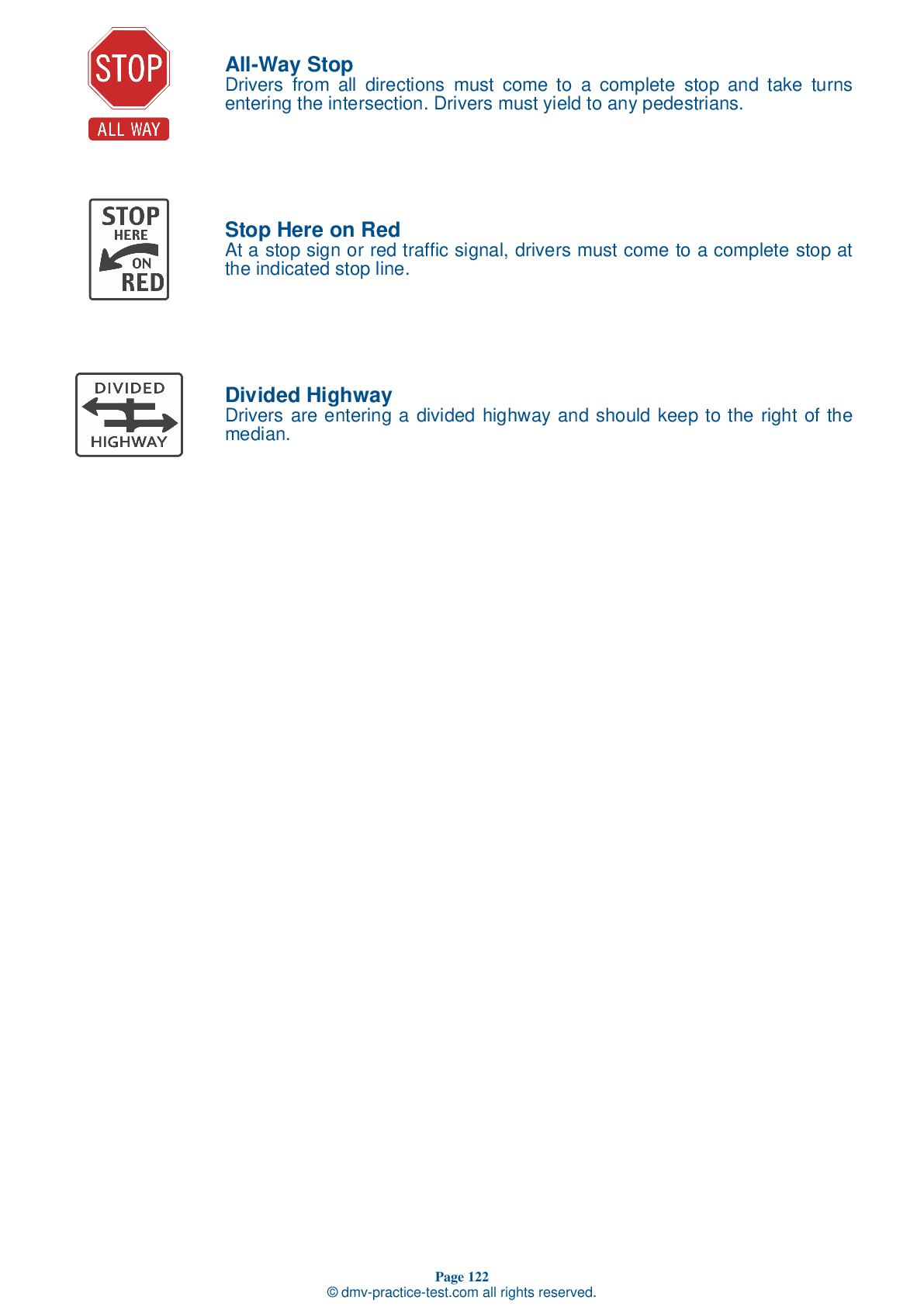Class B Driving Test | Connecticut 2025 #1 Page 4 of 7
Train for FREE online with our Connecticut class B license test. The official exam test consists of several obligatory parts, with all of them checking your knowledge of different blocks of road rules. If you need to obtain a CT CDL class B permit in 2025, practice as much as possible. Free sample tests published on our website will help you check and improve your knowledge and boost your grades. Please bear in mind that CDL class B requirements may vary from state to state.
22 . Air tank drains:
In an air brake system, air tanks have drains to remove accumulations of water and compressor oil. Allowing water and oil to accumulate in the system could cause damage to the brakes. Manually operated drains should be used daily.
23 . Distracted driving:
Distractions while driving can be physical (such as reaching for an object), mental (such as making conversation with a passenger), or both (such as holding a phone to send texts). Strategies to help you avoid distracted driving include pre-programming radio stations; planning out your route in advance; avoiding complex or emotionally taxing conversation while driving; adjusting your mirrors before setting out; and not eating, drinking, or smoking while behind the wheel.
24 . When you must travel down a hill, when should you switch into a lower gear?
You should always slow down and shift into a lower gear before starting down a hill. If you do not begin to drive down a hill at a low enough speed, you risk overusing your brakes, causing them to overheat and fade.
25 . When backing with a trailer:
When backing, you should pull forward to reposition your vehicle whenever needed. Drift should be corrected immediately by turning the steering wheel in the direction of the drift.
26 . While driving:
It is essential that a driver always uses proper signals to make their intentions known to others on the road.
27 . To confirm that a trailer has ABS, you can:
If you are unsure if a trailer is equipped with an Anti-Lock Braking System (ABS), look under the vehicle for the electronic control unit and wheel speed sensor wires coming from the back of the brakes.
28 . When using a fire extinguisher to put out a fire, you should:
Stay as far away from a fire as possible and aim your fire extinguisher at the source or base of the fire, not at the flames. It may be appropriate to extinguish certain fires with water. If you are unsure of how to treat a specific fire, you should wait for trained firefighters to arrive.
See the exact questions that will be on the 2025 Connecticut DMV exam.
99.2% of people who use the cheat sheet pass the FIRST TIME
Lillian MCcranie explains how our CDL study guide was helpful in passing the exam and recommends it to everyone.
Cameron tells us how he purchased the CDL exam, and found it to be a useful tool which helped him pass the exam and find a job.



